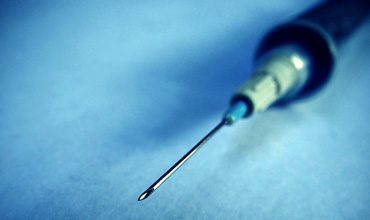The Prevalence of Needle Stick/Sharp Objects Injury in Hospital Staff and Preventive Practices Taken into Consideration

Abstract:
Health care workers are at an increased risk of accidental needle stick injuries because of the environment in which they work.
Objective is to study the prevalence of needle stick injury in the hospital and preventive practices taken into consideration.
Cross-sectional study design used, in a secondary care hospital in kuje, Abuja, Nigeria. Participants were 161 doctors, nurses, lab technicians and hospital cleaners. Statistical analysis: chi-square test and proportions
High percentages (79.5%) of health care workers were reported to have had one or more needle stick injuries in their career. The average number of the injuries ever found was like 3.85% per health care workers. 36 (22.4%) reported to have had needle stick injuries in the last one month. More than half claimed it was due to tiredness that caused the injury. Most of the injuries occurred during recapping, most washed the site of injury with soap and water while few did nothing. Only 10 took post exposure prophylaxis of HIV/AIDS after their injury.
In conclusion occurrence of needle stick injuries were found to be common. Recapping of needles which is an avoidable practice was found to be part of the contributing factor to the injuries.
Therefore prevention of needle stick injuries is an integral part of preventive programs and training and retraining of hospital staff for safety practices in handling needles and sharp objects needs to be continuous in the hospital.
References:
[1]. Adeboye AA, Moss GB, Soyinka F, Kreiss Jk. The epidemiology of needlestick and sharp instrument accidents in Nigerian Hospital. Infect Control Hosp Epidemiol 1994; 15:27-31
[2]. British journal of medicine(occupational and environmental medicine);Journal List > Br.J Ind Med > v.44(8).1987 Aug
[3]. CCOHS; Canadian Center for occupational health and safety. https://www.ccohs.ca/oshanswers/diseases/needlestick. Copyright 1997-2016
[4]. Elder A, Paterson c. Sharp injuries in UK health care: A review of injury rates, viral transmission and potential efficacy of safety devices. Occup Med (Lond) 2006;56:566-74
[5]. Ganczak M., Bohatyrewicz A., Korzen M., Karakiewicz B. The comparison of sharp injuries reported by doctors versus nurses from surgical wards in the context of the prevalence of HBV, HCV and HIV infections. Pol Przegl Chir. 2012;84:190-195.(PubMed)
[6]. Gestal JJ. Occupational hazards in hospital: risk of infection. Br J Ind Med 1987 jul
[7]. Henderson D.K. management of needlestick injuries. JAMA.2012;307:75-84(PubMed)
[8]. Kirchner, B(2012). Safety in ambulatory surgery centers: Occupational safety and Health Administration surveys”. AORN Journal. 96: 540-5.
[9]. OSHA USD of Labour? www.osha,gov/SCTc/etools/hazards
[10]. Occupational health, safety and hygiene- The Carter center. www.cartercenter.org>org>lecture_notes
[11]. Pruss- ustun A, Rapiti E, Hustin Y. sharps injuries; global burden of disease from sharps injuries to health – care workers. Geneva: WHO; 2003(Who Environmental Burden of Disease Series, No.3)
[12]. Pournaras S, Tsakris A, Mandreveli K, Faitatzidou A, Douboyas J, Tourkantonis A. Reported needlestick and sharp injuries among health care workers in Greek general hospital. Occup Med (Lond) 1999;49;423-6

